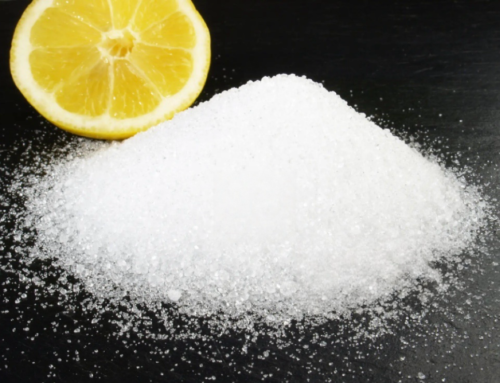In the culinary world, the use of food additives has revolutionized the way we traditionalize, preserve and enhance the flavor of our favorite dishes. E451(i) is a popular additive. In this article, we delved into the complexity of E451(i), revealing its chemical composition, physical and chemical properties, and its role as a multifunctional food additive.
What is E451(i) in food?
E451(i), also known as sodium tripolyphosphate, is a group of food additives with the chemical formula Na5P3O10. It exists as white granules or powder with varying solubility in water. The physical and chemical properties of E451(i) depend on the specific type and ingredients, but they generally exhibit excellent water holding capacity, pH stability, and emulsifying properties.
E451(i) is used in a wide variety of food products and serves multiple roles in different culinary applications. Due to its versatility, it is mainly used as a food additive. E451(i) acts as a buffer, stabilizer, emulsifier, and even a texturizing agent in various foods. Its ability to alter and enhance the properties of foods makes it a valuable ingredient in the food processing world.
What is the function of E451(i)?
 E451(i), has a variety of functions in food applications. It is a multifunctional additive with multiple benefits in different food products.
E451(i), has a variety of functions in food applications. It is a multifunctional additive with multiple benefits in different food products.
Processed Meats: E451(i) Added to processed meats such as sausages and deli meats to enhance water retention, improve texture, and maintain moisture levels during cooking to enhance juiciness and tenderness.
Canned soups: E451(i) acts as a stabilizer in canned soups, preventing the separation of ingredients and maintaining a consistent texture throughout the shelf life of the product.
Frozen Seafood: In frozen seafood products, E451(i) helps retain moisture, prevent the formation of ice crystals, and maintain seafood quality during freezing and thawing.
Bakery Products: E451(i) Acts as a dough conditioner in bakery products such as bread and pastry, improving dough strength, texture, and volume. It helps make the crumb softer, better structured, and has a longer shelf life.
Processed cheese: E451(i) is used in processed cheese to improve melting properties, enhance texture, and prevent oil and water phases from separating, resulting in a smooth and consistent product.
Salad Dressings: E451(i) Acts as an emulsifier in salad dressings to help blend oil and water-based ingredients together to form a stable and uniform salad dressing.
Instant Puddings: E451(i) acts as a thickening agent in instant puddings, helping to create a creamy and consistent texture that provides a satisfying mouthfeel.
Beverages: E451(i) is used as a stabilizer in some beverages to maintain overall quality, prevent sedimentation and ensure even distribution of ingredients.
Processed Potatoes: In processed potato products such as frozen french fries, E451(i) helps improve texture, retain moisture during frying, and prevent discolouration, resulting in a crisp and visually appealing product.
Desserts: Added to desserts such as mousse and custard, E451(i) improves texture, stabilizes mixtures, and prevents syneresis (separation of liquids), resulting in smooth and consistent desserts.
Sauces and Gravy: E451(i) is used in sauces and gravies as a thickener and stabilizer to ensure desired viscosity, prevent separation and enhance overall texture.
Instant Noodles: E451(i) Improves the texture and moisture retention of instant noodles, resulting in a chewy, palatable, and effective hydrating product.
Processed fish products: E451(i) Enhances the texture, moisture retention, and binding properties of processed fish products such as fish balls and cakes, providing a pleasant eating experience.
Powdered Beverage Mixes: E451(i) aids in the dispersibility and solubility of powdered beverage mixes, preventing caking and ensuring a homogeneous mix when mixed with water or other liquids.
Ice Cream and Frozen Desserts: E451(i) helps control ice crystal formation, improves texture, and prevents frostbite in ice creams and frozen desserts, resulting in smoother, tastier products.
In these various food applications, E451(i) acts as a stabilizer, emulsifier, thickener, texture enhancer, humectant, and binder. It plays a vital role in maintaining product quality, texture, appearance, and stability.
Is E451(i) food additive safe?
Safety is of paramount importance when it comes to food additives. E451(i), as a food additive, has undergone rigorous safety evaluations and is considered safe for consumption by regulatory authorities worldwide, including the FDA and EFSA. It is important to note that E451i should be used within the approved limits and in compliance with regulatory guidelines to ensure its safe and responsible use.
Conclusion
E451(i), with its multifunctional properties, plays a vital role in the food industry, enriching our culinary experiences and enabling the creation of a wide range of delightful dishes. Its versatility as a buffering agent, stabilizer, emulsifier, and texturizer makes it an indispensable ingredient in various food preparations. The safety and regulatory approval of E451(i) further reinforces its suitability for consumption. Embrace the potential of E451(i) and explore the endless possibilities it offers in elevating the taste, texture, and overall enjoyment of your favorite foods.
For more sourcing information on Sodium Tripolyphosphate, please contact our team at [email protected]




